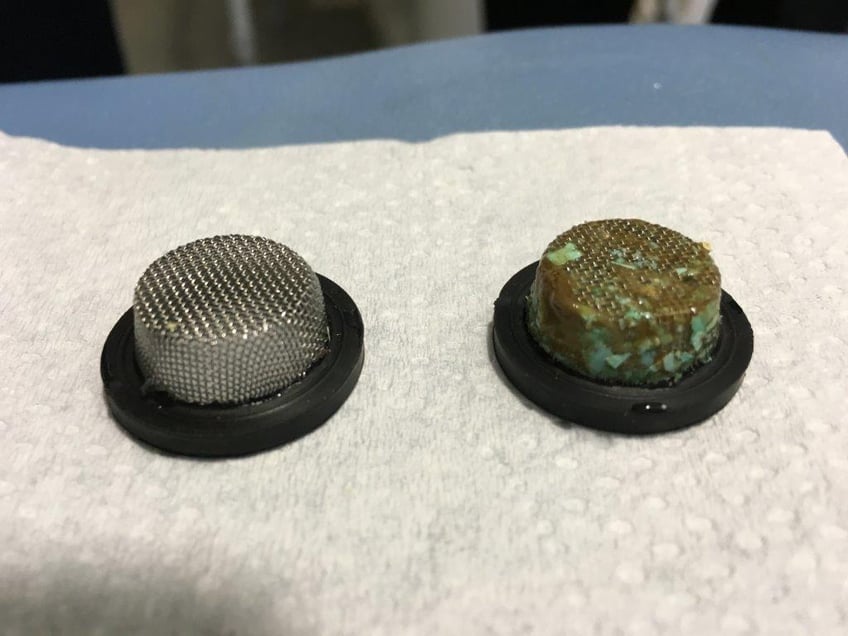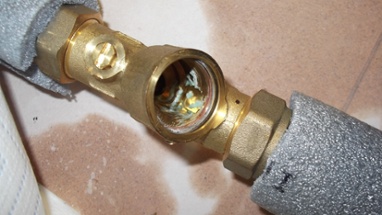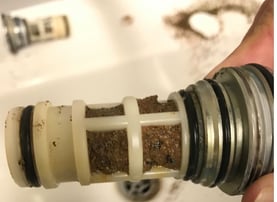
Biofilm is sometimes called the “City of Microbes”; which makes it all sound very mysterious. This week’s blog is part 1 of 2, where Water Hygiene Centre asks “What is a Biofilm?”
Introduction to Biofilms
In all their various forms, biofilms exist on surfaces and comprise a community of micro-organisms attached to each other and surrounded by slime. This slime is known as EPS, short for extracellular polymeric substance. EPS is the key to the success of biofilms offering an adaptive and protective micro-environment.
 Biofilms are ubiquitous in both natural and man-made environments. They are often found adhering to surfaces of one form or another, such as mudflats, teeth, sewerage treatment media and, as many Estates Managers know, the inside of water pipes and other components of our building water systems.
Biofilms are ubiquitous in both natural and man-made environments. They are often found adhering to surfaces of one form or another, such as mudflats, teeth, sewerage treatment media and, as many Estates Managers know, the inside of water pipes and other components of our building water systems.
In natural environments biofilms are one of the first stages of the food chain, providing the food source for the smallest animals or by breaking down materials into basic nutrients which are then absorbed by plants through their roots.
Biofilms grow virtually anywhere from the deepest oceans to deserts and the Polar Regions.
Examples of Biofilms
Biofilms are also present on and inside the human body forming part of the normal flora and fauna of the skin and digestive tract. Sometimes the make-up of these biofilms can become unbalanced giving rise to health complaints or infections. Dental plaque is a form of biofilm that causes tooth decay and gum disease in most animals. Peptic ulcers and recurrent childhood earache have also been found to be caused by biofilms.
Biofilms are used to our great benefit in sewerage treatment process where micro-organisms are encouraged to form biofilms in bio-reactors, bio-rotating contactors (BRCs), trickle beds and other installations. The organisms in the biofilms break down organic matter reducing the biochemical oxygen demand of the effluent.
The same principles may be applied to the pre-treatment of drinking water in which biologically active filters can be used to reduce the concentration of organic matter and in so doing reduce the amount of disinfectant required to prepare the water for distribution.
Biofilms have also been used effectively for the bio-remediation of contaminated land. The ability of some species of bacteria to metabolise contaminants such as oil and other petrochemical products into less harmful by-products is the key. Similarly, microbial leaching is the process of using biofilms to release metals from low-grade metal ores.
Biofilms in the Built Environment
Of course the biofilms of most interest to water hygiene professionals are those which form in building water systems. In poorly managed heating, cooling and domestic water systems, biofilms can contribute to operational inefficiencies including poor heat exchange and poor circulation and may also give rise to corrosion or the presence of pathogenic organisms.
As biofilms develop sections may break away seeding new parts of the system. This process, known as “Sloughing off” may occur when a biofilm is mature, following a physical disturbance or as a result of incomplete disinfection.
Favourable Conditions
Biofilm formation is encouraged where water temperatures are warm, water movement is slow and where there are sufficient nutrients to establish the colony.
 Despite best endeavours biofilm can and will form anywhere in a water system. At best formation will be patchy and limited. At its most severe biofilm can block the flow of water through pipes almost entirely or create a formidable soup of alien-like appearance in a water tank. More seriously, uncontrolled biofilm may result in human infections and even fatalities.
Despite best endeavours biofilm can and will form anywhere in a water system. At best formation will be patchy and limited. At its most severe biofilm can block the flow of water through pipes almost entirely or create a formidable soup of alien-like appearance in a water tank. More seriously, uncontrolled biofilm may result in human infections and even fatalities.
Biofilm - Part 2 - How to tackle biofilm will discuss how to tackle Biofilm including the benefits of living with it, and types of treatment and control methods.
Feel free to reach out if you have any questions about the issues mentioned above or if you would like to consult with one of our experts on water hygiene.
Editors Note: The information provided in this blog is correct at date of original publication - November 2017.
© Water Hygiene Centre 2019








